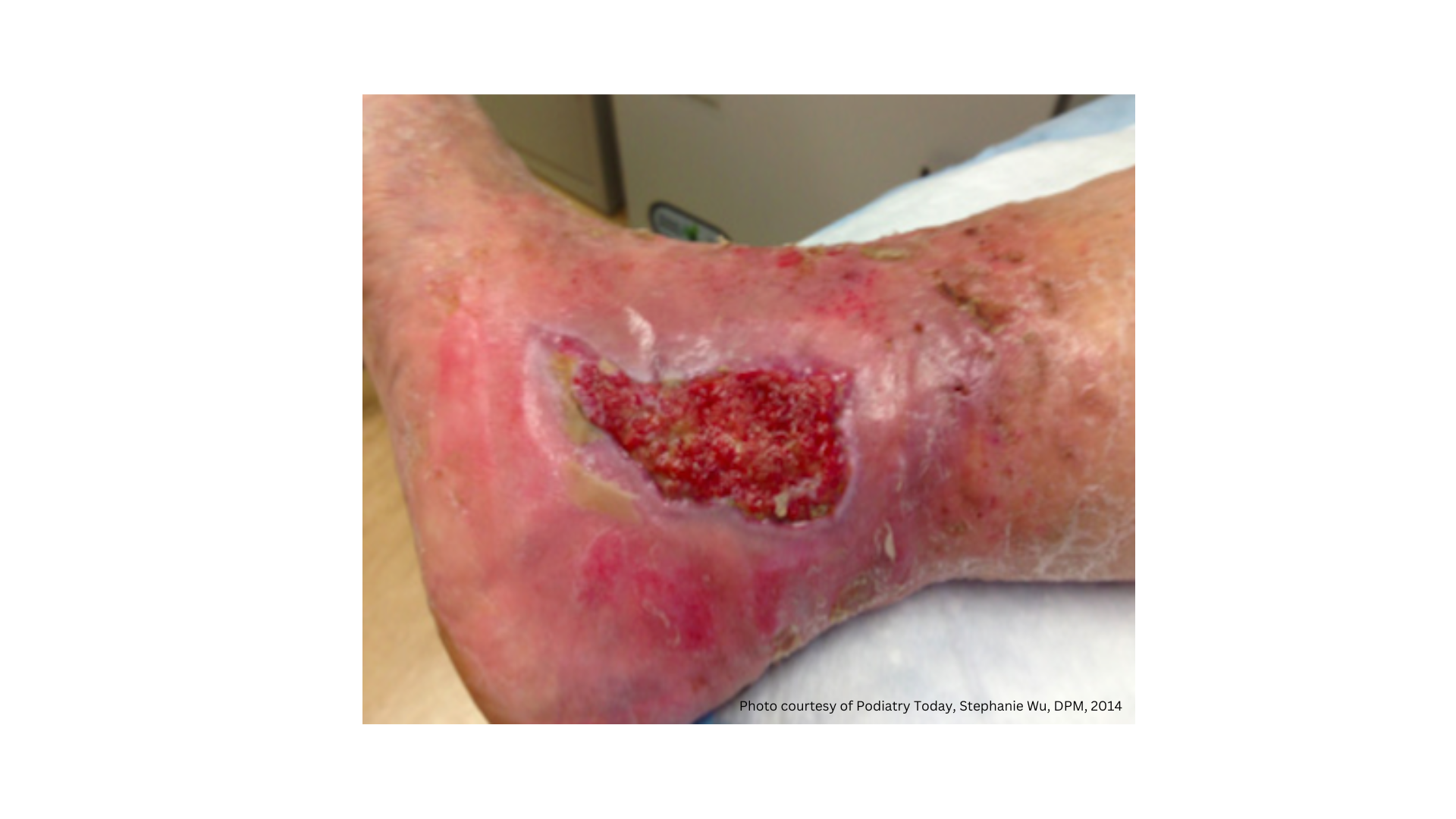Surgical Wounds
Surgical incisions are entry sites sutured or held together by a margin approximation dressing or device after an operative procedure. Dehisced surgical wounds are defined by the separation of the incision line prior to complete healing resulting in an open wound.
Symptoms of Dehisced Surgical Wounds
Partial dehiscence of a surgical wound will present as superficial layers or a small amount of tissue layers being reopened. Complete dehiscence, however, will present as all layers being separated with underlying tissue and organs being exposed and sometimes protruding through the wound opening. Other symptoms of dehiscence include visibly broken sutures before the wound has healed completely, as well as renewed pain, bleeding and drainage from the surgical wound site.


Etiology
Wound dehiscence can be caused by a problem with suturing. This can range from the wrong type of suture to overly-tight sutures, or simply error on the part of the clinician. Forces acting upon the wound area, like a cough, sneeze or the patient exerting a muscle by lifting a heavy object or having a bowel movement, can also cause dehiscence.
Risk Factors
Dehiscence can also be caused by infections or poor wound healing. Patients who have weakened immune systems (such as those with AIDS or renal disease) or who are malnourished are at risk for this along with patients undergoing chemo- or radiotherapy. Pressure or trauma can also contribute to dehiscence of a surgical wound.
Complications
The most common complications for surgical wounds are infection and dehiscence.
Treatment of Dehisced Surgical Wounds
A normal, healing surgical incision should be treated according to post-operative instructions, maintaining good hygiene and using an appropriate dressing. Avoid unnecessary strain on the wound site. For a dehisced wound, a patient should return for medical care immediately. This may include debridement, antibiotic therapy and resuturing or use of another type of wound closure device. Following this treatment, the wound will need to be monitored extremely closely for signs of recurring dehiscence.
References
Gottrup F, Melling A, Hollander DA. An overview of surgical site infections: aetiology, incidence and risk factors. World Wide Wounds. 2005. http://www.worldwidewounds.com/2005/september/Gottrup/Surgical-Site-Inf…. Accessed on March 30, 2017.
Krasner D. Chronic Wound Care 5. HMP Communications; 2012.
McDonagh V. Management of a dehisced surgical wound in an older patient. Wound Essentials. 2010. 5; 58-63.
Wound Care Centers. Dehisced Wounds. http://www.woundcarecenters.org/wound-types/dehisced-wounds.html . Accessed on March 30, 2017.
Image Source: Medetec (www.medetec.co.uk). Used with permission.







